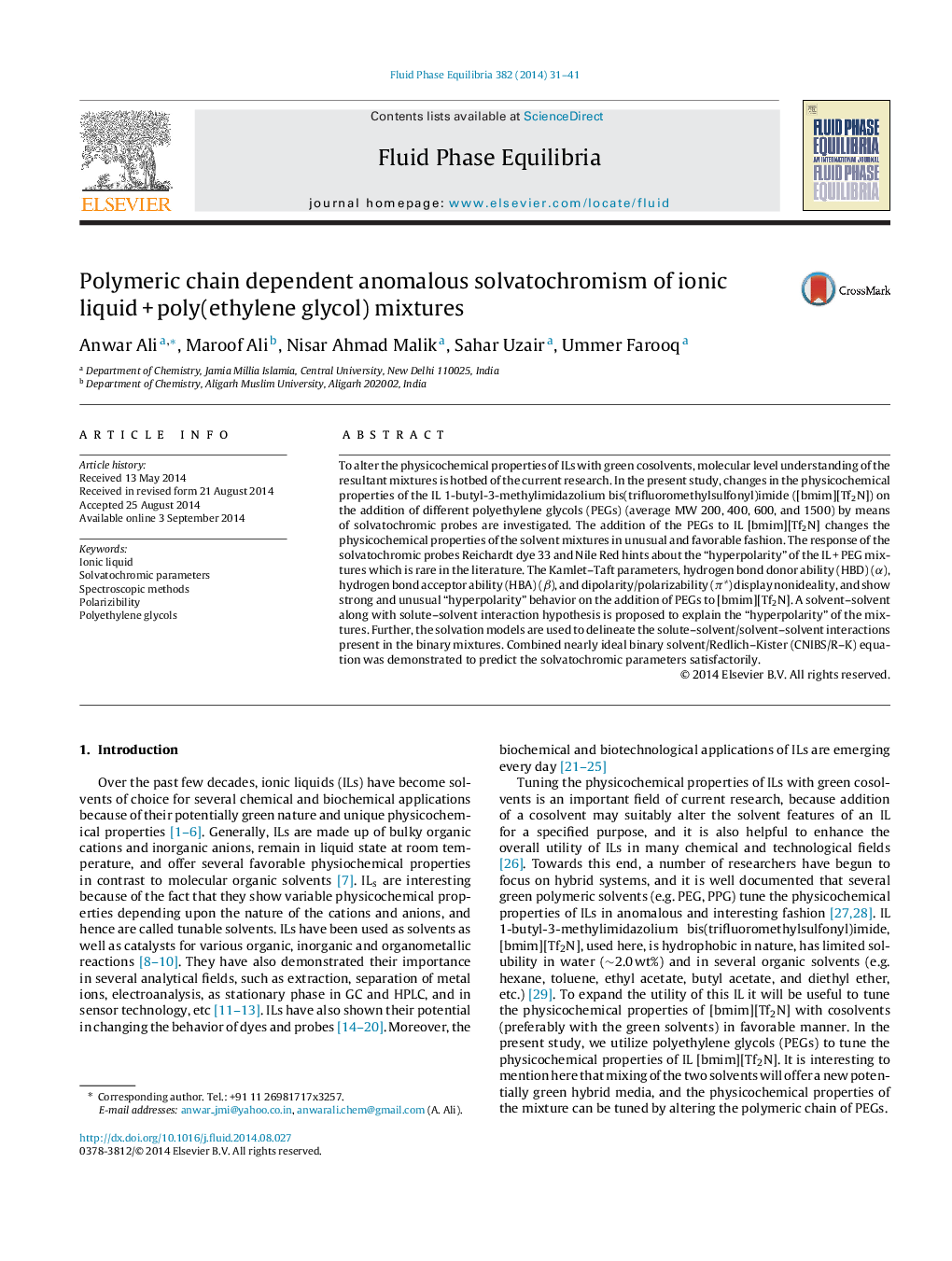| کد مقاله | کد نشریه | سال انتشار | مقاله انگلیسی | نسخه تمام متن |
|---|---|---|---|---|
| 201966 | 460580 | 2014 | 11 صفحه PDF | دانلود رایگان |

• Unusual solvatochromic behavior of Reichardt dye 33 in IL + PEG mixtures.
• Anomalous solvatochromism of Nile Red in IL + PEGs binary mixtures.
• Interesting behavior of Kamlet–Taft parameters.
• Solvatochromic probes indicate the presence of strong solvent–solvent interactions.
• Solvation model also hints toward new entity due to the interaction between IL and PEGs.
To alter the physicochemical properties of ILs with green cosolvents, molecular level understanding of the resultant mixtures is hotbed of the current research. In the present study, changes in the physicochemical properties of the IL 1-butyl-3-methylimidazolium bis(trifluoromethylsulfonyl)imide ([bmim][Tf2N]) on the addition of different polyethylene glycols (PEGs) (average MW 200, 400, 600, and 1500) by means of solvatochromic probes are investigated. The addition of the PEGs to IL [bmim][Tf2N] changes the physicochemical properties of the solvent mixtures in unusual and favorable fashion. The response of the solvatochromic probes Reichardt dye 33 and Nile Red hints about the “hyperpolarity” of the IL + PEG mixtures which is rare in the literature. The Kamlet–Taft parameters, hydrogen bond donor ability (HBD) (α), hydrogen bond acceptor ability (HBA) (β), and dipolarity/polarizability (π*) display nonideality, and show strong and unusual “hyperpolarity” behavior on the addition of PEGs to [bmim][Tf2N]. A solvent–solvent along with solute–solvent interaction hypothesis is proposed to explain the “hyperpolarity” of the mixtures. Further, the solvation models are used to delineate the solute–solvent/solvent–solvent interactions present in the binary mixtures. Combined nearly ideal binary solvent/Redlich–Kister (CNIBS/R–K) equation was demonstrated to predict the solvatochromic parameters satisfactorily.
Figure optionsDownload as PowerPoint slide
Journal: Fluid Phase Equilibria - Volume 382, 25 November 2014, Pages 31–41